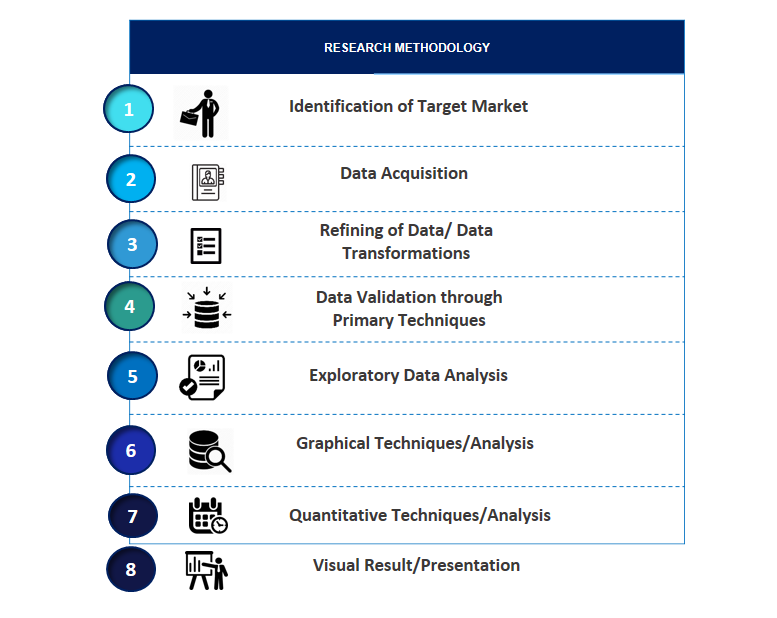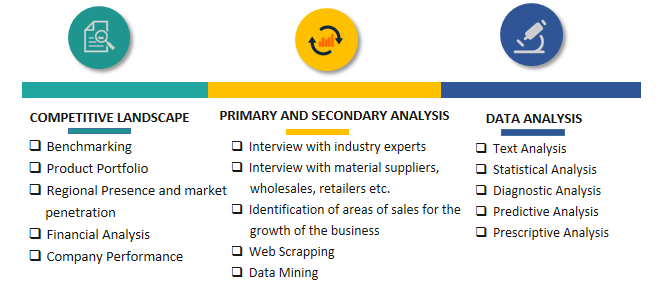Global Cubicles and Partition Market Overview:
According to SPER Market Research, the Cubicles and Partition Market estimated to reach USD 9.62 billion by 2030 with a CAGR of 5.4%. The growing demand for cubicles and partitions is due to the increasing demand for office furniture in the workplace. The expanding business environment in developing and developed countries will drive market growth. The number of projects for innovations and modifications in various countries is expected to fuel market growth. The establishment of numerous multinational and global offices by companies is expected to aid market growth.

Cubicles and partitions are enclosed office working spaces that use partitions to separate neighbouring workspaces. The goal of such a partition is to separate office workers in the office space. It provides employees with security, privacy, and safety. It is constructed of modular components such as overhead bins, work surfaces, walls, shelving, and drawers. On the work surface of the new enclosed office is a monitor, computer, mouse, and keyboard. A sea of cubicles is an office that is entirely made up of cubicles. They can be found in a variety of industries, including insurance, government offices, and technology.
Impact of COVID-19 on the Cubicles and Partition Market
The global effects of the COVID-19 pandemic are already being felt, and the global cubicles and partition market has been significantly influenced. The COVID-19 outbreak had a negative impact on several markets. Several countries have gone into lockdown. All types of businesses experienced disruptions as a result of the unexpected pandemic. Various industries were impacted by the pandemic's many restrictions, including the pharmaceutical industry. The halt in office furniture production had an impact on market demand. The pandemic prompted the adoption of the work-from-home (WFH) model, which influenced product demand. Because of the spread of the infection, there was a demand for work from home, which harmed the product's demand and slowed market growth.
Scope of the report:
| Report Metric | Details |
| Market size available for years | 2019-2030 |
| Base year considered | 2021 |
| Forecast period | 2022-2030 |
| Segments covered | By type, By Application, By Region
|
| Geographies covered | North America, Europe, Asia Pacific, Latin America, Middle East, Africa |
| Companies Covered | Ahrend, Aurora, Bene, Clestra Hauserman, EF, Fursys, Haworth, Herman Miller, HNI Corporation, ITOKI, KI, Kinnarps, Knoll, Martela, Okamura Corporation, Onlead, Quama, Sedus Stoll, Steelcase, Teknion
|
Drivers:
The global cubicles and partition market is expected to expand due to the rapid development of IT parks and commercial zones. The growing number of IT parks and corporate offices has increased the demand for office furniture and partitions. Organizations must also create office environments that improve colleague communications, social connections, and collaborative environments. This is expected to drive the product's market growth.
The demand for such furniture increased in tandem with the exponential growth of service jobs and commercial buildings. Growing globalisation has resulted in an increase in the number of offices, necessitating the use of cubicles and partitions. This type of corporate demand is expected to drive market growth.
Restraint:
A variety of factors can contribute to the growth of the cubicles and partition market. Factors such as the work-from-home paradigm are stifling. People have begun working from home in response to the COVID-19 pandemic. People nowadays prefer to work from home rather than in an office. This is expected to have an impact on the demand for cubicles and partitions as the workforce in physical office spaces shrinks. Such adoption of the work-from-home paradigm is expected to constrain and limit market growth.
Opportunity:
Growth opportunities in emerging markets, development of new design and offering the innovative options for the offices to meet their requirement.
Challenges:
Survival of small players and new entrants, concerns regarding innovation in the demand, are the challenges of the market.
Global Cubicles and Partition Market Segmentation:
By Type: Based on the Type, Global Cubicles and Partition Market is segmented as; cubicles and partition.
By Application: Based on the application, Global Cubicles and Partition Market is segmented as; office, healthcare, government, and others.
By Region: Because of the region's rapid consumption of cubicles and partitions, North America accounts for the largest market share of the global cubicles and partition market. The growing number of corporate offices and IT parks is driving up demand for the product. The presence of multinational corporations in the region is expected to boost market growth in the region as a result of globalization.
1. Introduction
1.1. Scope of the report
1.2. Market segment analysis
2. Research Methodology
2.1 Research data source
2.1.1 Secondary data
2.1.2 Primary data
2.1.3 SPER’s internal database
2.1.4 Premium insight from KOL’s
2.2 Market size estimation
2.2.1 Top-down and Bottom-up approach
2.3 Data triangulation
3. Executive Summary
4. Market Dynamics
4.1. Driver, Restraint, Opportunity and Challenges analysis
4.1.1 Drivers
4.1.2 Restraints
4.1.3 Opportunities
4.1.4 Challenges
4.2. COVID-19 Impacts of the Cubicles and Partition Market
5. Market variables and outlook
5.1. SWOT analysis
5.1.1 Strengths
5.1.2 Weaknesses
5.1.3 Opportunities
5.1.4 Threats
5.2. PESTEL analysis
5.2.1 Political landscape
5.2.2 Economic landscape
5.2.3 Social landscape
5.2.4 Technological landscape
5.2.5 Environmental landscape
5.2.6 Legal landscape
5.3. PORTER’S five forces analysis
5.3.1 Bargaining power of suppliers
5.3.2 Bargaining power of Buyers
5.3.3 Threat of Substitute
5.3.4 Threat of new entrant
5.3.5 Competitive rivalry
5.4. Heat map analysis
6. Global Cubicles and Partition Market, By Type, 2019-2030 (USD Million)
6.1. Cubicles
6.2. Partition
7. Global Cubicles and Partition Market, By Application, 2019-2030 (USD Million)
7.1. Office
7.2. Healthcare
7.3. Government
7.4. Others
8. Global Cubicles and Partition Market, By Region, 2019-2030 (USD Million)
8.1. North America
8.1.1. United States
8.1.2. Canada
8.1.3. Mexico
8.2. Europe
8.2.1. Germany
8.2.2. United Kingdom
8.2.3. France
8.2.4. Italy
8.2.5. Spain
8.2.6. Rest of Europe
8.3. Asia-Pacific
8.3.1. China
8.3.2. Japan
8.3.3. India
8.3.4. Australia
8.3.5. South Korea
8.3.6. Rest of Asia-Pacific
8.4. South America
8.4.1. Brazil
8.4.2. Argentina
8.4.3. Rest of South America
8.5. Middle East & Africa
8.5.1. Kingdom of Saudi Arabia
8.5.2. United Arab Emirates
8.5.3. Rest of Middle East & Africa
9. Company Profiles
9.1. Ahrend
9.1.1. Company details
9.1.2. Financial outlook
9.1.3. Product summary
9.1.4. Recent developments
9.2. Aurora
9.2.1. Company details
9.2.2. Financial outlook
9.2.3. Product summary
9.2.4. Recent developments
9.3. Bene
9.3.1. Company details
9.3.2. Financial outlook
9.3.3. Product summary
9.3.4. Recent developments
9.4. Clestra Hauserman
9.4.1. Company details
9.4.2. Financial outlook
9.4.3. Product summary
9.4.4. Recent developments
9.5. EFG
9.5.1. Company details
9.5.2. Financial outlook
9.5.3. Product summary
9.5.4. Recent developments
9.6. Fursys
9.6.1. Company details
9.6.2. Financial outlook
9.6.3. Product summary
9.6.4. Recent developments
9.7. Haworth
9.7.1. Company details
9.7.2. Financial outlook
9.7.3. Product summary
9.7.4. Recent developments
9.8. Herman Miller
9.8.1. Company details
9.8.2. Financial outlook
9.8.3. Product summary
9.8.4. Recent developments
9.9. HNI Corporation
9.9.1. Company details
9.9.2. Financial outlook
9.9.3. Product summary
9.9.4. Recent developments
9.10. ITOKI
9.10.1. Company details
9.10.2. Financial outlook
9.10.3. Product summary
9.10.4. Recent developments
9.11. KI
9.11.1. Company details
9.11.2. Financial outlook
9.11.3. Product summary
9.11.4. Recent developments
9.12. Kinnarps
9.12.1. Company details
9.12.2. Financial outlook
9.12.3. Product summary
9.12.4. Recent developments
9.13. Knoll
9.13.1. Company details
9.13.2. Financial outlook
9.13.3. Product summary
9.13.4. Recent developments
9.14. Martela
9.14.1. Company details
9.14.2. Financial outlook
9.14.3. Product summary
9.14.4. Recent developments
9.15. Okamura Corporation
9.15.1. Company details
9.15.2. Financial outlook
9.15.3. Product summary
9.15.4. Recent developments
9.16. Onlead
9.16.1. Company details
9.16.2. Financial outlook
9.16.3. Product summary
9.16.4. Recent developments
9.17. Quama
9.17.1 Company details
9.17.2 Financial outlook
9.17.3 Product summary
9.17.4 Recent developments
9.18. Sedus Stoll
9.18.1. Company details
9.18.2. Financial outlook
9.18.3. Product summary
9.18.4. Recent developments
9.19. Steelcase
9.19.1. Company details
9.19.2. Financial outlook
9.19.3. Product summary
9.19.4. Recent developments
9.20. Teknion
9.20.1. Company details
9.20.2. Financial outlook
9.20.3. Product summary
9.20.4. Recent developments
SPER Market Research’s methodology uses great emphasis on primary research to ensure that the market intelligence insights are up to date, reliable and accurate. Primary interviews are done with players involved in each phase of a supply chain to analyze the market forecasting. The secondary research method is used to help you fully understand how the future markets and the spending patterns look likes.
The report is based on in-depth qualitative and quantitative analysis of the Product Market. The quantitative analysis involves the application of various projection and sampling techniques. The qualitative analysis involves primary interviews, surveys, and vendor briefings. The data gathered as a result of these processes are validated through experts opinion. Our research methodology entails an ideal mixture of primary and secondary initiatives.


